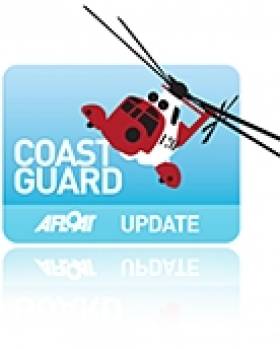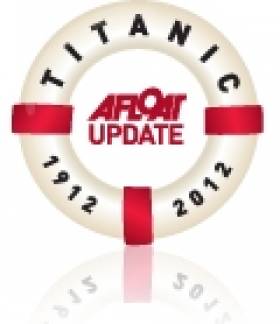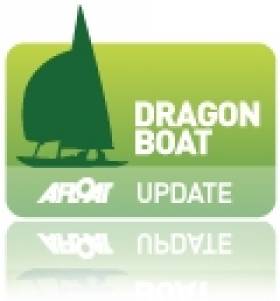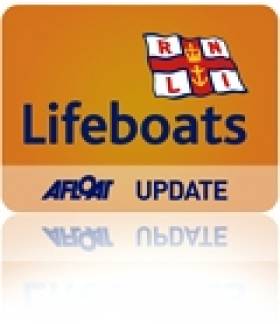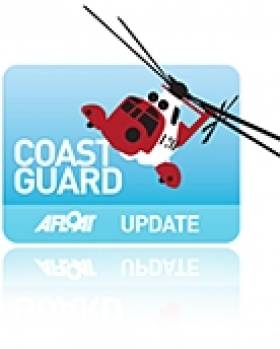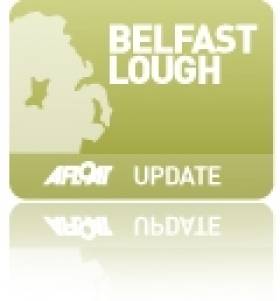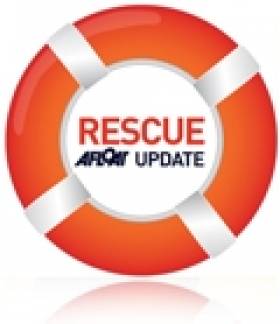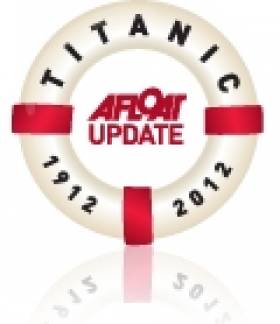Displaying items by tag: Belfast
Major Maritime Exercise 'Diamond' for Belfast Lough
#coastguard – A major maritime exercise, 'Exercise Diamond', which involves HM Coastguard, vessels, RNLI lifeboats, helicopters, search and rescue coordinators, Belfast Harbour, emergency services and local authorities will be held on Sunday 23 September from 9.30 am. Exercise Diamond, a live large-scale incident exercise, will be held within Belfast Lough, Northern Ireland and involve 365 people.
A briefing will take place in Bangor RNLI Lifeboat Station by the MCA media team at 8.40 am.
A vessel will be available for media representatives, for filming and photographing the exercise as it unfolds. The boat will depart from Bangor Marina at 09.00 am and is expected to return at roughly 11.00 am. There will be limited places on board so please contact the MCA press office as soon as possible to book a place.
The RNLI will be supplying footage, taken from lifeboat cameras during the exercise. Further detail about where this can be obtained will be available nearer the date.
The exercise director and other exercise players will be available on the day for interview. Please contact the MCA press office in advance to make bids for interviews.
Steve Carson, who is the Exercise Controller says:
"Exercise Diamond will test the major incident plans for all of the organisations that would be involved should a major maritime incident happen in Northern Ireland. We would particularly like to thank Stena Line and RFD Survivitec who will be providing vital resources for the exercise."
Tribute to 'Forgotten' Titanic Workers in Belfast
#TITANIC - A new plaque has been unveiled in Belfast to remember eight men who died during construction of the Titanic in the city more than 100 years ago.
As UTV News reports, NI First Minister Peter Robinson was on hand at the unveiling of the tribute on the wall outside the Harland & Wolff Welders Club on Dee Street in East Belfast.
The First Minister described the eight men as an integral part of the Titanic story.
"In an era when the phrase 'health and safety' did not even exist it was seen as an inevitability that lives would be lost during any major construction or engineering project.
"It is important the story is told of those who built what was the largest ship afloat at that time."
Construction of the ill-fated cruise liner began in Slipway No 3 at the Harland & Wolff shipyards in March 1909, more than two years before her launch.
The workers' tribute joins a new memorial in the grounds of Belfast City Hall that lists the names of all 1,512 passengers and crew who perished in the tragedy.
UTV News has more on the story HERE.
#dragon – A third in yesterday's race on home waters gives Simon Brien a nine point lead going into the final race of the Dragon Edinburgh Cup on Belfast lough this morning.
After a shocking start where an Australian competitor, Gordon Ingate, with an Americas Cup pedigree, forced the defending champion Martin Byrne into the pin end boat. The Dun Laoghaire boat rounded the top mark in 26th position in a fresh 20knot + breeze and played catch up all round the race course to eventually finish eighth.
Byrne has moved up to second overall just two points ahead of current world champion Lawrie Smith with several others snapping at their heels.
Technically any of the top eight could still win in the single title race decider tomorrow.
The penultimate day of the 2012 Dragon Edinburgh Cup sponsored by Belfast Harbour brought big winds and big changes in the overall leader board.
There was just one race to complete so the committee set a full two-mile beat and with the wind gusting up into the high 20s it was to be a day that would truly sort the men from the boys. This fifth race in the series also brought the single discard into play and as a result there were major gains and losses with several of the early favourites dropping out of serious contention whilst others jumped up the rankings.
The man who made the biggest gain of the day was Simon Brien who went from second overall, ten points behind Julia Bailey, to first overall with a nice but not unassailable nine point lead over fellow Irishman Martin Byrne, who discarded a 39th place in favour of today's eighth to scoot up from ninth into second. Tonight reigning Edinburgh Cup Champion Brien was relieved to still be in contention to defend his title at all. On the start line he was caught up in a major incident caused by another boat and ended up rounding the first mark back in 25th place before fighting his way back up through the fleet.
There are now only four points separating second to fifth and technically any of the top eight boats could still win the regatta. Lawrie Smith finished the race in fourth and moves up into third overall, just two points behind Byrne. A single point behind him is Jens Rathsack who makes an even bigger leap up the scoreboard from 12th to fourth thanks to adding a sixth and discarding an OCS.
For Julia Bailey it was definitely not a good day. She did her best to recover from a lousy start but ended up getting her worst result of the series at 22nd place and drops down from first to fifth overall, one point behind Rathsack. Gavia Wilkinson-Cox put in another very solid performance to finish fifth, but the discards did not work in her favour so she drops from third to sixth overall.
Today's race winner was double Olympic Gold Medallist Poul Richard Hoj-Jensen who took control off the line and never gave a moment's though to relinquishing it as he delighted in the stronger conditions. His win puts him in seventh place overall, four points behind Wilkinson-Cox, and still in with a slim chance of claiming a record equalling sixth Edinburgh Cup title. Andrew Craig is the final player still in with a long shot at the laurels. His ninth place in race five leaves him four points behind Hoj-Jensen but 24 points behind Brien. Rounding out the top ten are Cameron Good and Klaus Diederichs who clearly loved the stronger winds and crossed the line in second place after a spectacular tousle amongst the leading pack.
One final race remains to be sailed tomorrow and with a forecast for lighter winds it remains anyone's championship.
With the championship race completed it was the turn of the crews to take the helm in the traditional Edinburgh Cup crews race which proved to be every bit as cut throat and exciting. One or two of the regular helms found themselves a bit disconcerted to be on the bow in well over 20 knots of breeze but the crews showed no mercy. Henry Kingston sailing Cameron Good's Little Fella was the ultimate victor although he was challenged hard by 11-year-old Will Heritage sailing Julia and Graham Bailey's Aimee. Ross Vaughan sailing Gordon Patterson's Bear took third with Guy Clarabut in Jono Ratnage's Fit Chick hard on his heels. Will Heritage was declared the very deserving winner of the special prize for young helms Under 30.
#FLOODING - The clean-up has begun across Cork city and county after heavy flooding over the past two days resulted in millions of euro worth of damage, as The Irish Times reports.
Debris blocking a rubbish screen on a new culvert on the Douglas river has been blamed for the more than four feet of flood water that swamped the suburb of Douglas south of Cork city.
Elsewhere in the city, six people were evacuated from homes in the Meadow Brook Estate in Glanmire after the Glashaboy river burst its banks.
RTÉ News - which has a photo gallery of affected areas in and around Cork - reports that electricity is being restored to most customers after widespread power outages.
Met Éireann's Eoin Sherlock said that nearly 50mm of rain fell in a single six-hour period on Wednesday night - more than two-thirds of the monthly average rainfall for June.
Meanwhile, in Belfast politicians face public anger over flash flooding overwhelmed the city and left major routes impassable and sparked concerns over rising sewage water.
According to the Irish Independent, Northern Ireland emergency services reported more than 700 call-outs linked to the flooding in greater Belfast alone.
Minister for Regional Development Danny Kennedy, who is responsible for the North's roads and water system, said that "no infrastructure would have been able to cope with the level of rainfall that we have seen.
"It simply isn't designed to cope with those volumes of rain."
Stranded Canoeist Rescued By Bangor Lifeboat
#RNLI – On Sunday afternoon, Bangor lifeboat received a request from Belfast Coastguard to launch and rescue a canoeist who was in difficulty off Groomsport.
Relatively calm sea conditions allowed for the Lifeboat to proceed at full speed to the scene which was close to the entrance of Groomsport Harbour
Upon arrival, lifeboat crew spotted a young man standing on an isolated outcrop of rocks with his canoeing companion paddling close by. With tides rising, the young man was plucked to safety by Lifeboat crew.
The young man was taken to the safety of Groomsport Harbour where he was attended to by paramedics.
RNLI volunteer crew man Tim Lee who was involved in this rescue took the opportunity to stress four very important sea safety tips for canoeist going afloat this summer.. He said. 'Always wear a lifejacket, secondly tell others where you are going, thirdly carry some means of calling for help and finally always check the weather and tides' He added 'We are glad that this young man is now safely ashore'.
#COASTGUARD – Belfast Coastguard is co-ordinating the search for two people who were seen falling from a ferry in bound to Belfast from Scotland.
Earlier this evening Coastguards received a call from a ferry reporting that two people were in the water in Belfast Lough. One person was recovered by the pilot boat at 6.25 pm, 15 minutes after the alarm was raised and was taken to hospital.
Bangor and Donaghadee RNLI lifeboat, an Irish Rescue helicopter, police helicopter, fast rescue craft from two ferries, tugs and a pilot boat are all engaged in a search for another missing person in the vicinity of Victoria Channel, Belfast Lough. Coastguard rescue teams from Bangor and Portmuck are also searching the shoreline of Belfast Lough.
Ian Murdoch, Belfast Coastguard watch Manager says:
"We have been searching for the second missing person for over two hours but sadly we have not found any sign of them so far."
#BELFAST LOUGH – The largest flotilla of yachts ever assembled in Belfast Lough took place on Sunday, 6th May to help officially open Belfast Harbour's new marina. Over 60 boats sailed up the Lough into the new facility at Abercorn Basin in the heart of Titanic Quarter.
The event, organised by Belfast Harbour, began at 12 noon when 60 yachts and motorboats from across Northern Ireland congregated at the centre of Belfast Lough. They were then led into Belfast Harbour by the RNLI and a Harbour pilot boat, before disembarking at the marina for a BBQ.
The marina is Northern Ireland's largest city-centre marina and will accommodate an increasing number of leisure craft and recreational visitors to the city. Located beside Titanic Belfast and the Odyssey Arena, the marina offers a new dimension to Belfast's tourism offering.
Speaking at the event Trevor Anderson, Belfast Harbour's Operations Director, said:
"It is fantastic to see the marina filled by the local boating community. Belfast Harbour is encouraging boats to berth here on a permanent basis and also to use it as an opportunity to visit the city and Titanic Belfast.
"Since Titanic Belfast opened there has been a large increase in the numbers of visitors to the marina and this is something we want to build upon as Titanic Quarter continues to grow."
The marina provides boats a near city centre location with easy access to Belfast Lough. Facilities on site will include water, power, security and a toilet and shower facilities.
Search Scaled Down for Missing Crewman in Irish Sea
#RESCUE - BBC News reports that the search for a cargo ship crewman missing in the Irish Sea has been scaled down.
The 22-year-old from Slovakia was reported missing yesterday morning from the Fehn Sirius, which was en route from Belfast to Portugal, as it headed past Arklow, Co Wicklow.
According to The Irish Times, he was last seen on the cargo ship around 10pm on Monday night as it headed south of the entrance to Strangford Lough.
Lifeboats from Portaferry and Newcastle in Northern Ireland and Arklow joined the search and rescue operation, which was assisted by the RAF helicopter based at Prestwick in Scotland and an Irish Coast Guard helicopter.
However, most rescue services have now been stood down as the Fehn Sirius continues to backtrack in the Irish Sea, with assistance from the Naval Service vessel LE Ciara.
Only three days ago the body of another mariner was recovered from the Irish Sea off the north Dublin coast, more than a month after he went missing.
Titanic Belfast 'Is Designed to Impress'
#TITANIC - The Independent's Simon Calder reports on his special preview of Titanic Belfast, the £97 million (€116.3 million) tribute to the ill-fated ship on Belfast Lough.
"For once, the term 'of Titanic proportions' applies literally." he writes. "The top of the five-storey building is exactly as high as the tip of Titanic when the transatlantic liner was completed at the Harland and Wolff yard a century ago."
The monument is not only intended as a tribute to the tragedy, but also as a beacon to attract tourists to the "open, friendly city" of Belfast that has emerged after decades of the Troubles.
The travel writer compares the city's plans to the renaissance of Bilbao in northern Spain - like Belfast, a former shipbuilding centre damaged by terrorism that has become "a vibrant, elegant city that stands alongside Amsterdam, Barcelona and Berlin" thanks in part to the bold architecture of the Guggenheim museum.
Calder adds: "Almost every aspect of Titanic Belfast chimes with the city beyond the structure's metal jacket and big windows. And as with Titanic herself, the fitting out is designed to impress."
As previously reported on Afloat.ie, Titanic Belfast will be one of the largest employers in Northern Ireland’s tourism industry, as well as one of the North’s largest recruiters, when it opens later this month.
The Independent has much more on the story HERE.
Two Bodies Recovered from Water Near Belfast
#NEWS UPDATE - The PSNI has confirmed that the body recovered from Belfast Lough yesterday morning is that of missing Stranraer man Carius McNicoll.
According to BBC News, the 24-year-old student was last seen on a ferry shortly before docking on 8 January.
His body was discovered near Holywood in Co Down. A post-mortem has confirmed that the cause of death was drowning.
In a separate incident yeserday, The Irish Times reports that a body recovered by divers in the River Lagan is believed to be that of a missing 20-year-old man.
John Murphy had reportedly entered the river at the Lagan Weir after an evening at the nearby Odyssey Arena last month. The body found has yet to be formally identified as Murphy.
In the wake of his loss, Murphy's family has called for an end to cheap drinks promotions.


























